Solar power any time, day or night? This molten salt energy storage solution in Germany makes it reality
As countries ramp up the percentage of renewables in their energy mix, molten salt energy storage (MOSAS) offers the potential to take the energy transition to a new level with dispatchable renewable power generation at any time. MAN Energy Solutions is putting their solution to the test at the German Aerospace Center’s world-famous solar research facility in Jülich, Germany.
By Ingo Petz
The freight lift jolts into motion. Fifty-five meters up, this second solar tower here at Jülich in western Germany, recently constructed by the German Aerospace Center’s (DLR) Institute of Solar Research, is only a bit smaller than the one built in 2011 – and the two soar into the sky above what looks like a lake of solar mirrors.
The mirrors, around 2,000, glint in the daylight and align themselves in the direction of the sun so that the light is concentrated and reflected onto the solar tower receiver. “The receiver absorbs the solar radiation,” says Miriam Ebert, Project Manager at the Institute, “Some towers at industrial solar power plants can be up to 250-meters high, but even at this 55-meter-height we have a fully functional molten salt cycle.”
The DLR has been conducting research on Concentrated Solar Power (CSP) in Jülich for a decade and is running Germany's only solar power tower facility. The new second tower will include a molten salt circuit as well as other solar research facilities to investigate new technologies for sustainable energies.
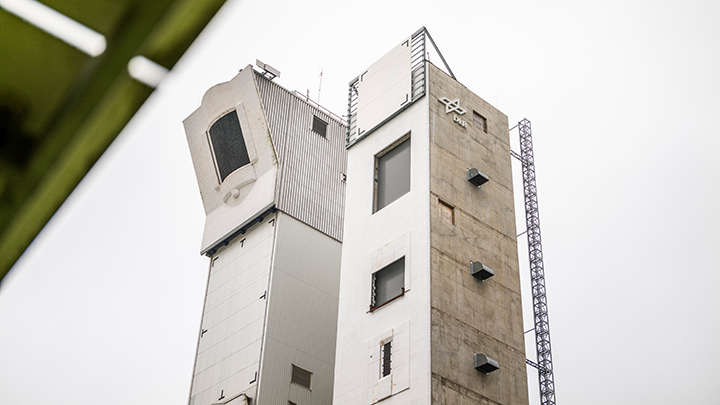
The new 55-meter-high solar tower at the CSP plant in Jülich, Germany, will include an innovative molten-salt receiver and cycle to convert sunlight energy into heat and store renewable energy. ©Jan Hosan
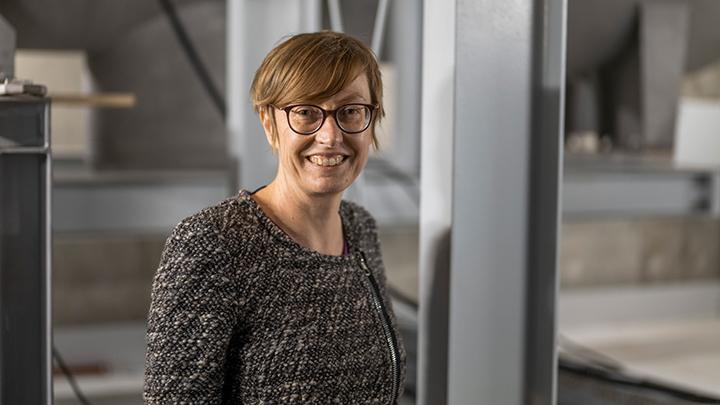
“Our demonstration plant meets the requirements of a commercial solar receiver in all operating states,” says Miriam Ebert, Project Manager for the Institute of Solar Research, German Aerospace Center (DLR). ©Jan Hosan
Molten salt energy storage and the energy transition
Suddenly, the heavy lift stops and the gate opens at the first level of the tower offering a glimpse of the future of CSP. Inside the tower, there’s still a lot of construction going on, but the first tests for the circuit, designed and built by MAN Energy Solutions, are scheduled to start next spring – and by the end of the tests the DLR is expecting to show a major technological leap for CSP and the use of renewable energy in the energy transition.
“Switching to a sustainable energy system within the next decades,” says Norbert Anger, Head of Site at the MAN Energy Solutions’ facility in Deggendorf, Germany, “and guaranteeing a stable supply of power needs some bold steps in testing new technologies that will help making it possible. After all, with digitalization increasing, we’re going to need more power in the future.”
It's a win-win when we can achieve synergy effects with such an experienced global company as MAN Energy Solutions.
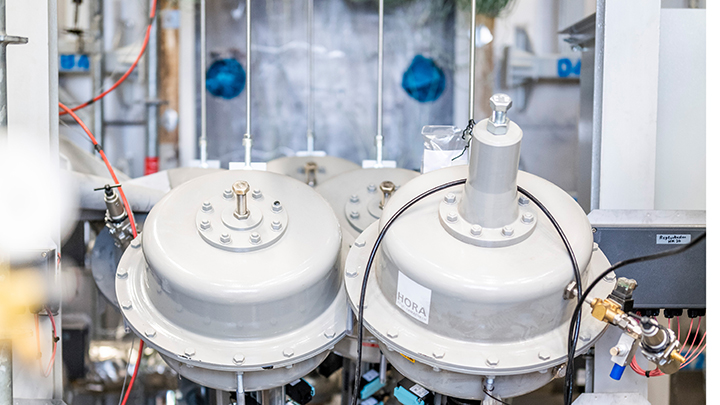
Currently construction of the new molten-salt cycle is well underway, with tests starting in spring 2022 to see how components respond to highest temperatures and improve efficiency and cost-effectiveness. © Jan Hosan
Storing the sun: thermal energy storage
In Jülich the DLR is starting to extensively test the latest Molten Salt Receiver of MAN Energy Solutions. “The technology can operate at higher temperatures, which has an impact on the efficiency of the entire plant," explains Christian Schuhbauer, Head of New Technologies at MAN Energy Solutions in Deggendorf. “The plant's salt storage can store heat at 600°C, whereas conventional salt storage solutions in use only operate up to 565°C.”
The biggest advantage of the high-temperature storage is that solar power can be produced even on a cloudy day. While the science behind this kind of thermal storage is complex, the process is fairly simple. First, the salt is transferred from a cold storage tank to the tower’s receiver, where solar power heats it up into molten salt at temperatures from 290°C to 565°C. The salt is then collected in a hot storage tank where it is kept for up to 12 - 16 hours. When electricity is needed, regardless of whether the sun is shining, the molten salt can be routed to a steam generator to power a steam turbine.
In principle, it works as a heat reservoir much like a common hot water tank, but salt storage can hold two times the amount of energy of a conventional water storage. The groundbreaking solution at the plant in Jülich will be used to further test how cost-effectiveness and efficiency can be improved.
Leaders in research and decades of experience
The solar receiver is one of the key components of the plant, developed to correspond to the needs of the molten salt cycle. A national consortium carries out the research on the receiver and the molten salt cycle within the project HPMS-II. The work is supported by the Federal Ministry for Economic Affairs and Energy and the Ministry of Economic Affairs, Innovation, Digitalization and Energy of the State of North Rhine-Westphalia.
Based on DLR research and built by MAN Energy Solutions, “the receiver is already designed for temperatures of up to 600°C. And we’re optimistic that we can make the jump to also 600°C for the salt storage,” explains Ebert. By increasing the temperature, the energy content of the molten salt increases as well, improving the system’s heat-to-electricity efficiency and reducing the overall cost of energy.
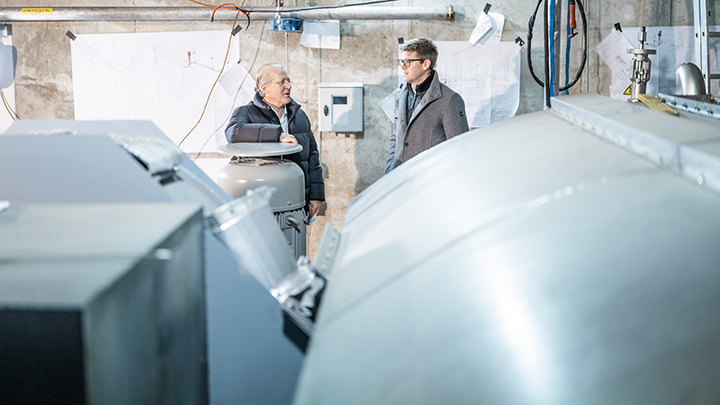
Norbert Anger (left), Head of Site at MAN Energy Solutions in Deggendorf inside the second solar tower with Christian Schuhbauer, Head of New Technologies, MAN Energy Solutions Deggendorf. ©Jan Hosan
Since the decomposition process begins for salts above a certain temperature, research is being carried out in Jülich under real conditions to see whether the envisaged goal will produce the desired results, and how the pipes, pumps, materials used and other components hold up under permanent heat stress and corrosions caused by the salt. All of this will ultimately affect the service life of the system.
“We’re convinced that the solar receiver combined with the MOSAS is cost-effective and the right technology for the future,” says Anger, “not only in complex solar thermal plants, but also in an adapted version in combination with wind farms and photovoltaic plants.”
Of course, his optimism has a reason: MAN Energy Solutions in Deggendorf has been developing and producing molten salt-cooled fixed bed reactors for the chemical industry for over 70 years, so the know-how and the needed experience to transfer this technology to the energy sector are more than sufficiently available. With the solar receiver project HPMS-II and MOSAS, the company sees a major opportunity for customized salt storage and solar thermal solutions.
Molten salts can operate at higher temperatures, which has an impact on the efficiency of the entire plant.
Which is why the cooperation with DLR and its advanced research in CSP technology, is a particularly good match: “Our demonstration plant meets the requirements of a commercial solar receiver in all operating states,” says Ebert. “And of course it's a win-win when we can achieve synergy effects with such an experienced global company as MAN Energy Solutions that’s known for driving industrial development processes.” She looks at the pipes and lines of the salt storage facility. “And this will all benefit the climate."
When coal plants become salt storage
At the end of the day, Anger, Ebert and Schuhbauer are standing on the highest accessible level of the tower. The view over the field of solar mirrors goes out to the Sophienhöhe, the largest artificial hill created by the re-greened spoil heap of a former open-pit coal mine. The landscape is practically an allegory of the energy transition and more than a symbol of how old technology led to newer ones.
Moreover, the old and the new are coming full circle. In the future, the existing structures of coal-fired power plants can be converted into salt storage facilities fed by solar power plants or wind farms. “Our research here holds a lot of potential for the world,” says Anger. He looks out over the horizon. “It really is the optimal place to shape the future.”
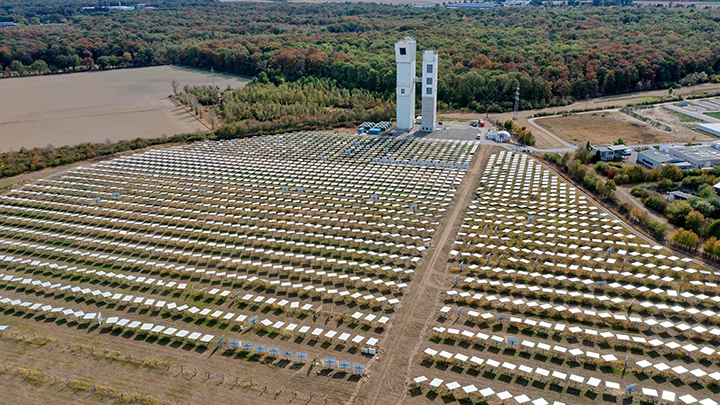
Aerial view of the German Aerospace Center’s world-famous solar research facility in Jülich, Germany. ©DLR.
Switching to a sustainable energy system within the next decades and guaranteeing a stable supply of power needs some bold steps in testing new technologies that will help making it possible.
About the author
Author and journalist Ingo Petz lives in Berlin, where he has written for some of the most renowned publications in the German-speaking world, including the Frankfurter Allgemeine Zeitung and Der Standard.
Energy storage
Thermal energy storage with molten salt – flexibility for integrating renewables in power and heat systems
Molten salt energy storage (MAN MOSAS) is a reliable choice that can be integrated into various applications – ensuring a secure power supply.
Explore more topics
-

Hoegh - LNG-powered car carrier
With its first LNG-powered car carrier, Höegh Autoliners is taking a big step towards its target of net-zero by 2040. The centerpiece of the vessel is a MAN Energy Solutions MAN B&W ME-GI dual-fuel engine.
-
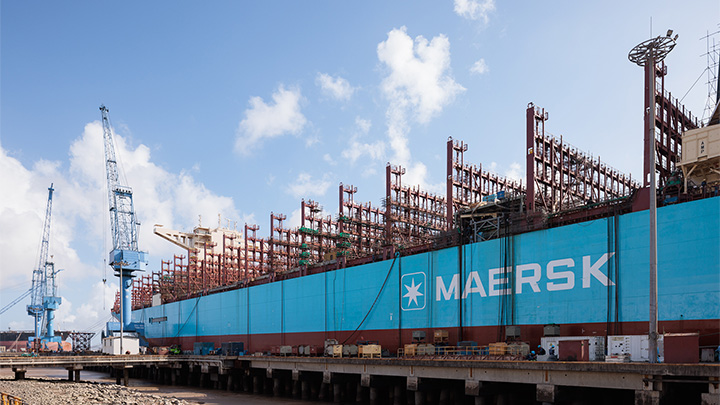
Maersk Halifax Retrofit
The world’s first methanol retrofit of the Very Large Container Vessel Maersk Halifax opens the doors for green fuels.
-
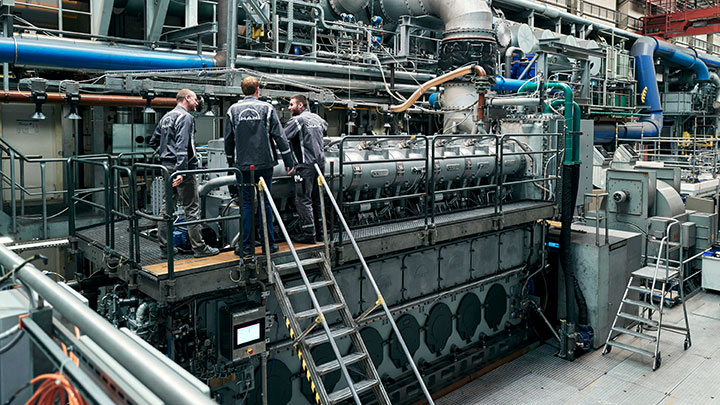
Methanol dual fuel retrofit
Engineers are now testing a retrofit for four-stroke ship engines that will enable ferry and cruise ship operators to meet the growing requirements on emission reduction with green methanol.
MAN Energy Solutions is now Everllence.
We have adopted a new brand name and moved to a new domain: www.everllence.com. This page will also be relocated there shortly. We are working on shifting all pages to www.everllence.com.
